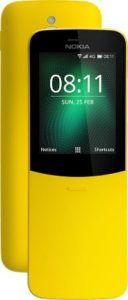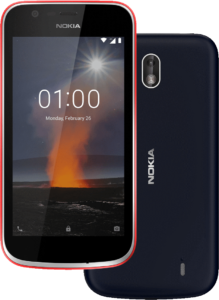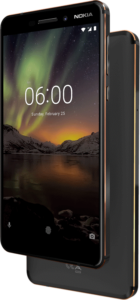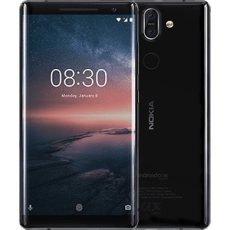The MWC 2017 was a special event for Nokia mobiles licensee HMD Global, it was the year of their rebirth. The company got the most limelight last year, mostly owing to the nostalgia associated with Nokia 3310, which they had re-released. And the consumers answered positively with Nokia outselling established brands like Google, Sony, HTC and even OnePlus in its first year.
So, it is natural that they needed to put up a good show at this year’s MWC also, which they did, releasing as many as 5 phones.
The event started with HMD Global CEO Florian Seiche announcing that Nokia had sold 70 million handsets in its first year, also saying that this has given the company a reason to double down in 2018 with a long-term ambition of becoming one of the largest global smartphone makers.
Must Read: The Nokia 7 Plus reappears in images showing its attractive design

The first was the re-launch of the iconic Nokia 8110, popularly dubbed as the banana phone. The original gained a cult status after it was featured in the Matrix trilogy, and HMD Global seems to want to capture that nostalgia.
The refresh brings back the old slider design, along with a modern touch of app support, Wi-Fi, and 4G LTE. It has a 2.4-inch QVGA display and a 2MP rear camera also. It is powered by a 1500 mAh battery, giving it an incredible 25 hours of standby time. It runs Nokia’s own OS which is loosely based on KaiOS and is powered by a Qualcomm 205 mobile platform.
Next was the turn of the Nokia 1.

Nokia 1 is the first Nokia which is powered by Google’s Android Go edition. Android Go is basically a lightweight, stripped down version of Android One, which comes bundled with the lightweight version of popular apps (like Assistant Go, Gmail Go, Maps Go etc.) and is intended for phones with 1GB or 512 MB RAM. It is built in mind keeping the next billion people in mind who want to migrate to a smartphone from feature phones.
The phone has modest specifications, 1GB of RAM, a MediaTek MT6737M processor and 2150 mAh battery. The phone packs a 5MP primary camera and a 2MP secondary one. All of this is in a polycarbonate body housing a 4.5-inch display with 480 by 854-pixel resolution. HMD has given the device Xpress on covers, which allows you to replace the back cover as per your taste.

HMD then announced the Global availability of the Nokia 6 2018 which was released as a China exclusive device last month.
The new Nokia 6 is powered by a Snapdragon 630 mobile processor, which is a huge boost from the Snapdragon 430 from the Nokia 6 a year ago. This makes the new Nokia 6 60% faster than its predecessor.
The revamped model now contains a 16MP Zeiss Optics sensor at the back coupled with an 8MP shooter at the front. The fingerprint sensor has been moved to the back. The phone also supports Nokia 8’s bothie mode, which allows recording simultaneously from both the front and rear camera along with the ability to record 360-degree audio. It also has support for USB-C fast charging. The device has now been brought under the Android One program promising even faster updates. Few things that remain unchanged from the previous model, is the 5.5 inches polarized Full HD display, 3or 4GB of RAM and 32 or 64GB of onboard storage all housed in a body built out of a single 600 series Aluminum block.

With the Nokia 7 Plus, HMD Global is jumping into the 18:9 display trend.
Nokia 7 Plus is the sequel to the China-exclusive Nokia 7, which was released last year. Nokia 7 plus has a 6-inch Full-HD+ display, which is mostly an edge-to-edge one. It is powered by a Snapdragon 660 processor coupled with 4GB of RAM and a 3800mAh battery. It also has the face unlock feature and the, now usual, 360 audios and bothie feature.
On the imaging side, it has dual-camera setup at the back, once again ZEISS powered, a 12MP primary sensor and 1 13MP telephoto allowing up to 2X optical zoom. The front camera is 16MP once again ZEISS powered. It is also a part of the Android One initiative
With the last device, Nokia ended the event with a bang.

The Nokia 8 Sirocco. A revamp over the Nokia 8 released last year, this is HMD Global ’s most impressive offering till date. The 95%of the front is covered with Gorilla Glass 5 making the device incredibly rigid. There’s glass on the back too and the two portions are joined with a stainless-steel frame. The display is slightly curved, almost in line with what Samsung does with its displays.
The device now supports Wireless Charging and is IP67 Water and dust resistant but lacks the 3.5mm headphone jack. It has a 5.5-inch pOLED QHD display manufactured by LG display.
For the imagery, it again has ZEISS powered dual camera 12MP+13MP setup at the back with the ability to shoot images with the now common depth of field effect and support up to 2x lossless optical zoom. The front camera is a 5MP Zeiss shooter, which is a huge drop from the 13MP in the Nokia 8.
The device is powered by Snapdragon 835, which is a bit of a disappointment, has 128GB of internal storage coupled with 6GB of RAM and the fingerprint sensor is housed at the back.
Abhinandan Jain
19- year old tech enthusiast. Covers leaks, news, software updates related to some of the biggest and most prominent OEM's in the Android space.
